Samsung Rugged Phones. Xcover, Active, and more
As a stand-up comedian once said: It's not like Samsung is a small company, formed by Sam and Sung. Back in the day with keypad phones, Samsung was minor. Now, they are high-end Android front runners and e.g. screens in other devices, including iPhone, are typically Samsung.
Samsung seems to have had a very clear business strategy, having high- mid- and entry level phones on the market.
Acknowledging various needs, Samsung also provided rugged phones which - when not all phones were (at least somewhat) waterproof, was certainly a thing.
The rugged phones could be divided into to types:
Active - which were flagship phones from the high end S-series, in a rugged frame
Xcover - in as such phones in their own right, though often based on a 'sister' phone i the mid-range.
Target groups
I have already mentioned the segmentation here: A-series were cheaper, S-series high end, and other models would somehow fit somewhere in all that. E.g. Xcover 4 is based on J5, as far as I can figure.
The point being that in seeking to fill the market, a demand for somehow weather resistant phones had been identified.
I imagine two mayor target groups:
- Craftsmen who need their phones to stand up to often dusty and dirty environments, while still having the capacity to e.g. photograph repairs, write invoices and communicate with the office, as well as basic phone features.
- Outdoor segment; people who like to hike and cannot just go indoors when the weather changes. Again: A good camera to take pictures from that peak, capture those larvae, etc is crucial, while data may not necessarily be. Danes (and Dutch) on bikes may fit in this category.
Of course there are other target groups, but it seems most rugged phones are designed for these two or people who either identify with those.
Avtive, Xcover, and more?
I've already outlined the two lines Samsung took - but at the very beginning, there was a brilliant, 4,5'' IP67 rated phone called S5 Mini. It deserves mentioning - especially as it got cancelled so fast:
- The development of phones simply wasn't going in the 'mini' direction, but it was at it's time brilliant, stood up to a lot, and due to it's small size could also easily have a good, sturdy cover fitted.
A shame that line never got followed up - it proved to be a dead end.
A quick mentioning of the concepts of Active and Xcover.
As mentioned, Active were rugged versions of S6, S7, and S8. The line took a curious turn when Samsung reached S9-generations - more on that anon later.
Xcover had several defining features:
- User replaceable battery
- Rugged design, IP67, IP68, IP69
- Often: Mid- to low-range specs
- For quite some time: Physical buttons for home, back and running apps.
- Generally followed the development trajectory of other phones - just with mid-range specs
- A very decent software update support
'Active' phones
Yeah. There's some segmentation in adding camo to a phone, too.
These were in essence good phones made if not better, then different.
The flagship phones, the S-series did especially from S6 cement Samsung as a very serious producer of high-end phones with excellent cameras. The S6 had both the 'normal' S6, an Edge-version (curved screen edges), and S6 Active.
It wasn't as much about cranking up the MPix on the cameras - in fact the amount of pixels captured has proved less interesting than sensors, stabilizors, and other aids on phones where cameras have limited size on the optics.
Take, for instance, the Sony Xperia Z5 Compact, which I owned, which sported a whopping 23 MPix (and in 2015, too), but really failed to produce very good pictures due to the lenses, light sensors etc being sub-par.
23 MPix is, however, higher than a S8's 12 MPix.
"This one goes to 11".
"Brawndo has electrolytes"
The point being: Samsung took photography very serious on the S-series, and wrapped the S6, S7, and S8 in... Well... Some other wrapping. Rubber edges, flexible back covers - certainly an effort to make the phone more sturdy, crucially earning the phones IP68 ratings - something the 'mother' phone didn't necessarily have.
All good, I've owned a few of these, but the build quality had something to be desired in back covers loosening, charging ports being really fragile etc.
No doubt this was good phones, but as S8 had an IP68 rating already, I opted for a good, sturdy cover for that in stead and realized, I probably had a better phone for it...
Battery life was unimpressive on both S8 and S8 Active, but the camera was excellent. A queer design detail was the fitting of fingerprint reader next to the camera on the back of the phone.
Greasy fingers on the camera lens gallore!
On the non-Active version the cover could aid your fingers in hitting first time. Yet, still.
Queer design - and a weird thing for people going hiking: No pictures on the hike beyond the first 36-48 hrs.
The battery life became the reason I changed phones, buying a S10e - which was even more unimpressive in that regard.
That felt like an own goal. 😱
The Active line died after S8. The S6 Active, S7 Active, and S8 Active came with an option of camo-covers which kind-of tells me the segment was people who would be inclined to buy 'military grade' stuff.
Eventually I think the death of the Active line was simply that by the launch of the S9 most phones by default would have IP68 ratings, and that was the main selling point on the Active-phones (I know they had workout software, too, but hey! That can easily be downloaded).
Xcover S7 Active/S8 Active quickfire review
It's really like having a S7 or S8. Everything works, they quality of the operation and the setup is classic Samsung. A bit weird with the rear mounted fingerprint reader, but it works quite well (on the Xcover FieldPro, too). No down marks there!
Batteries will wear out, and the Active versions aren't as ruggedly built as one may expect. On the plus side that means you can change the battery yourself as the back cover has a tendency to fall off. On the downside that means you compromise the waterproofness... So, well. Yeah.
Opting for at S8 with a rugged case gave more meaning...
Ease of living with an Samsung S8 Active on an everyday basis:
Really easy. Software runs a charm, cameras are great. But when a Li-Ion battery starts to decay, it becomes harder.
4/6 would be the verdict.
Xcover phones
Bloody muddy! The first Xcover smartphone had large, easy accessible buttons, and made no secret of how it could be used in the branding material (picture from the same)
The Xcover phones are what I'd call benchmark rugged phones: Samsung being the biggest brand, Xcover being an established sub-brand within that brand. It really makes sense to look at these phones - though other, specialized brands as e.g. Cat / Caterpillar certainly has entered the scene.
The first Xcover was a keyed phone, but let's fokus on the touch screen smart phones here:
The S5690 Galaxy Xcover was a chunky little thing, not really taking any design prices, or sporting too much wow-effect. Branded with a lot of mud on it, it did, however, promise to be able to take a kicking - I still see them around among scouts, so i guess it has a claim to fame there. Probably mostly as a camp-phone or due to sentimental reasons. The charging port was a real issue, which was promptly solved in the Xcover 2.
Xcover quickfire review
It always felt like this was the first edition: not much power, but then again; it was a ground breaking phone in 2011. As you still might see them around in 2023 means that it's a design to last.
But that is mainly for users with few or no other uses than calling and texting.
Battery life wasn't great.
Ease of living with an Samsung Xcover on an everyday basis:
Easy enough. It never felt 'done', and the battery life quickly became an issue.
Of course you could always buy an extra battery - but charging the extra requires it to sit in the phone...
3/6
Xcover 2
Notable design feature was the rubber flap for the charging port.
Picture from Danish site DBA.
...which had a rubber cover for the charging port, and really made the brand. Xcover 2 had an excellent fit in the hand, excellent handling of software - Opera running beautifully - and just being overall very, very good - except from the camera.
Imagine going to a mountain top, wanting to document the event, and ending up with pictures looking like they were taken by a single use camera?
Or, being a craftsman who had to document your work, but would struggle to make the pictures stand up i court in a complaint case...
Well. That was Xcover 2 for you. As you could just change the battery, you had a great chance of actually take those pictures (even on a single battery, it would last for a few days).
It was, however, great. So great, that the following Xcover 3 had a complete overhaul, design-wise.
It felt like Samsung knew that improvements would only feel like minor adjustments - hence the redesign.
Quickfire review of the Xcover 2
This phone felt like the real deal. Sorting charging port issues was major, but even the design made you feel, you had something special here. It was chunky, the flap had to be removed for charging / data transfer, but it was genuinely brilliant. So brilliant, that I recon the development team had to completely rethink the device on the next generation.
Eventually I upgraded/side graded to S5 Mini for a better camera. The S5 Mini is, however, the only smart phone I ever managed to crack the screen on. 🤔 Not too sturdy, huh?
Ease of living with an Xcover 2 on an everyday basis:
It felt really easy, and the upgrade was not necessarily one that made sense.
The feeling of having a phone that delivered what I claimed was a treat.
It would even draw some attention from people, as the design was unusual.
Lovely bit of kit, 5/6
Xcover 3 - designers enter
The trade-off being less water resistance (no charging port cover).
In a time where Sony Xperia lauched 23 MPix camera phones (see above), Samsung S-series launched the legendary S6 Edge, the Xcover Development Department [TM] thought that they could do some design on their own: Xcover 3
The new thing is a sleek design and end of the rather chunky frame. It was beautiful, fitted perfectly in your hand, and curiously sported an open charger port again?!
This all meant a step down a grade in IP6X-rating, but it really felt like a cool phone, where the 4,6'' screen had a good body-to-screen rating.
The physical navigation buttons were closer set together - which was not exactly enlightened, but not as such a design flaw.
We still (July 2023) have one co-worker using this phone (retired to the office, though), and it still kind-of pulls it's weight, just answering and taking calls, running one, simple app.
I love this design, and though I see it mirrored in later phones from Samsung, it's not as brilliant.
What is a design on a phone, that consists almost entirely of screen? Well, it's rounded corners, it's body to screen-ratio, it's placement and feedback of buttons. This one is brilliant!
Of course you'd experience lint in the charging port, due to the lesser frame it was a tad more fragile that others, and there's the less resistance to water/dust, too. But it looked and felt good!
Quickfire review of Xcover 3 on a everyday basis
This felt special, too. All chunkiness was gone, and the only concern was whether it would stand up to heavy rain. It's a design classic, and never has the frame been better on smartphones; balancing ease of use (physical buttons a great help here!), fit in pockets, and a 4.5'' screen, enabling you to see details (and zoom if you couldn't).
To be fair, this is the type I've seen with most cracked screens, but in terms of
Ease of living with an Samsung Xcover 3 on an everyday basis I would state that it was really easy, and the design was outstanding with the sleek body and frame.
The removal of rubber flap for the charging port made it even easier...
5/6 is perhaps a tad kind, but wow. I think Samsung actually managed to do something different within the concept here... They came up with the optimal frame of a phone here, too: Not too big, not too small.
Xcover 4
The poor camera is the only thing letting this phone down.
In relatively short time after Xcover 3, the Xcover 4 was launched. This was fairly close to perfection, but was also driven by other development in the Mobile world: 4G was introduced, a larger screen (5''), more memory, NFC.
Even the camera was improved, and though 13MPix, qua what's unfolded above, doesn't tell the whole story, it made the phone very usable - though you couldn't but help looking at, say, S-series that now had very groundbreaking cameras, fingerprint readers, and all those sorts of features.
The frame is back to a more Xcover 2-like setup with a shock absorbing frame, yet still a sleek design like the Xcover 3. No cover for the charging port, though.
Most importantly you could still swap batteries in one minute, the option to upgrade with memory cards for storage was very real and ensured the phone's longevity.
In fact: The Building Service personnel at my work place still use them to some extent - though many have upgraded to iPhone Minis as they feel they are cooler (I think), but also have vastly better cameras. But mind you; Still in a small frame.
The Xcover 4 is still upgradeable to Android 9 which is fully workable and security does not by any means seem to be that much of an issue.
I had this as a backup phone (for when others failed or I was between primary phone), and almost looked forward to changing back to this. Only argument not to was still the camera: I am a father, and like photos of my son to be as good as they can with my limited skills as a photographer.
In addition I do concert reviews, and taking pictures in stage light is a big ask for a quite un-advanced camera.
I even had the opportunity to upgrade to the 4S, which by now is my backup.
The phone just soldiers on, has user-definable buttons and, crucially, fits in pockets, hands, and doesn't break when you sit down with it in the pocket...
Quickfire review of the Samsung Xcover 4.
It simply does everything you can ask of a phone these days; no real innovation has been made since this was launched, though people will ask for fingerprint readers all day long.
Sleek design, copying the best from Xcover 2 and Xcover 3, making the perfect hybrid. Android 9 still runs well enough today, and Samsung set op the software so that updates are only felt when you start the phone first time.
That this phone got a 'relaunch' made perfectly sense: It is just so well made with regards to frame and features.
I argue this has a better screen than the upgrade, but it is also fair to say that more power was desireable.
Ease of living with an Samsung Xcover 4 on an everyday basis
Really easy. Open charger port, reasonable handling of software - keys that can be defined to shortcuts. This just works. I have twice bought new battery for my Xcover 4 (the latter then transfered to my 4S, when I upgraded).
Xcover 4S
The 2019 4S relaunch was however a testament to how good the Xcover 4 is/was.
After a few years Samsung re-launched Xcover 4 under the name Xcover 4S. More memory was welcome, on-paper double speeds in the processors nice, a few more MPix on the camera (but crucially not better sensors / stabilizers) - and a PLS LCD in stead of the IPS LCD. The latter certainly feels like a downgrade as the colors are, hmm, weird. We have a few of these at my workplace, and pictures just don't come out as good on the screen.
The USB 3 port is welcome - this is simply the EU standard these days.
It REALLY doesn't feel like that much of an upgrade, and doesn't fix the major drawback with the Xcover series: Camera. You'd think the'd add fingerprint reader, but in my experience that is a smart feature, I easily can live without.
Still. It's upgradeable to Android 11 and prolongs the life of a phone which can do all it's asked, has changeable battery, can be upgraded if you need more space, and fits beautifully in your hand.
What does a smart phone really need, these days? Be able to run apps, have a decent camera, NFC is good for identification on e.g. passport chips (and enables you to pay via mobile).
This has it all - Personally I don't need more speed, fingerprint- or face recognition, massive screens, or any other nonsense which is branded as 'the new and improved'.
As a matter of fact I hear no-one among the two segments above cry for 'phaplets' for their use.
It seems about 5'' - and a solid frame - and the from that derived fitting into hands is ideal.
Something Samsung didn't seem to take that approach, and latter versions has just grown i size.
But... Electrolytes.
Or something.
Quickfire review of Samsung Xcover S4
It's as good as the 4 (screen exempt), but runs faster and will update longer. 16 MPix is nothing I hear the crowds cheer for (a better performing camera is a different story, though), but most of what the 4 does, 4S does a little better.
Ease of living with an Samsung Xcover 4S on an everyday basis
Easiest there is, as long as you accept putting the plug ind to charge. A new battery will set you as little as €12 back, and actually be an upgrade on the mAh.
Xcover 5
that this really isn't that much of an upgrade...
Was this, really, an upgrade?
I struggle to see where. It has a larger screen, better battery. But that's almost what's worth mentioning.
The design may draw some resemblance with the 3-version, but only slightly.
More screen-to-body ratio, 5,3'' seems to be stretching the limits for what's comfortable.
Upgradeble to Android 13 is of course nice - The Enterprise Edition is like a Long Term Service for Linux distros. But... It doen't at all seem... New?
They'd even rid the phone of the physical front three of buttons which were iconic, tactile good, and lend it's origin to craftsmen...
That's a major drawback, and in spite of waterproofness seems to be easily compromised by buttons, I've yet to see a Samsung fail in this regard...
They've stuck with the swappable battery, which is good.
But Samsung could, of course, only fail after the brilliant 4/4S, and the Xcover 5 seems to follow a similar trajectory to the Xcover 3: Design took somehow the center stage, not necessarily making it a better phone, per se.
Still. The user-changeable battery is a major feature, which all phones should have. I've been quoted before saying that user-changeable batteries and an IP68 rating should be standard in phones (though they may seem mutually excluding - which the Xcover brand has shown not to be true...).
The camera is no better than the 4S in use, there's 'Face recognition' which is, really, just an app. It seems a bit cheap just to stock install an app, rather than make a fingerprint reader...?
This is one of those weird things where there seems to be very little focus on whether the user actually will have a better experience (UX) with this 'innovation'.
But it's newer 'technology', it has electrolytes....
OK. I'll drop that point now, but still...
People will probably select this phone due to the better battery, software support etc. I, for one, am disappointed. For the first time the development feels 'flat', stagnant, and crucially moving in a wrong direction.
Quickfire review of Xcover 5 EE
As you can read above, I was quite disappointed in this. The Face Recognition is really, really stupid, and I doubt anyone has actually asked for that? The frame is OK, but again it feels a bit like a desire to design - rather to accommodate user needs.
And putting a colorful ring around the camera doesn't hide the fact that the camera probably isn't better - possibly even worse? - than the one on the 4S. I mean: Jesus' tits!
Software runs fine, buttons are customizable - but where the hell are the physical buttons all of the sudden?
Oh, well.
Ease of living with an Samsung Xcover 5 on an everyday basis
Really easy. All you could ask for to ease the use, should be wireless charging.
Judgment clouded by disappointment: 4/6
Xcover FieldPro
Chunkiness was never a part of the Xcover brand - well until this. Brilliant, but large, phone!
Perhaps all the resources had gone into developing The Xcover FieldPro. Segments have TOTALLY changed here! Like: Big time!
It's very unlikely that you at any time could go into a phone dealer and buy this phone.
It literally was developed to 'first responders' and was sold primarily to such in USA, South Korea, and France.
Guards, police, first responding health personnel, firemen. That's who they had in mind, and they underlined this point by adding not one but two dedicated physical 'Push to talk' buttons. Buttons which, by the way, can be re-calibrated through 3rd party software. This is very, very good.
Based more-or-less on S9 (merging the Active development with Xcover), it is the first Xcover phone to have a very good camera. 12 MPix is more than enough - and here inheriting the stabilizers and sensors from flagship phones.
In fact, it lends it's comparison to the S9 on most specs.
Aaaaaand. It's HUGE. Screen size is right (5,1''), but the frame is comparable to Xcover 2/4 - and then there's the thickness. 14,2 mm. That's a lot. I take it Samsung realized that Cat phones were a real competitor, and just wanted to show that they could do one better. Which i think they did...
Weirdly enough you can certainly live with the size - rounded corners being the solution. The material it's built from seems almost Bakelite-like but has a bounchy quality, meaning drop to concrete is no problem. In fact, the weakest point of the build is certainly the screen, which since S6 have been prone to burn-in.
Charging port on the side is weird, but works behind that rubber flap.
And then there's the software. Samsung Android is working brilliantly, but it being a heavily segmented phone, updates are not that much of a priority. I had my hands on a second hand unit, and it was flashed with an Android 9 which could not be upgraded, unless you are on an AT&T network (!). Were you lucky enough to be on a such, you should be able to upgrade to Android 10... Which is nice and usable.
The lack of updates available in Denmark, however, eventually meant that there were apps, I could not use. This made this brilliant phone redundant, but it was a very sad goodbye: It has a fingerprint reader, good physical buttons, user-changeable battery and a frame that will be here when we're all dead.
I've mentioned before that the 4S upgrade should have included a camera like the one on the S-series.
Xcover FieldPro had exactly that (probably so that responders could document scenes). It blows my mind that that never happened to the 4S, 5, Pro og 6 Pro...
Quickfire review of the Xcover FieldPro
This is a fat version of what the 4S update should have been. The camera is good, fingerprint reader.
And yet, for reasons unknown, the phone won't update to anything above Android 9 (AT&T: 10).
Born with 8.1 that seems odd.
This really also takes it's toll on the...
...Ease of living with an Samsung Xcover FieldPro on an everyday basis
...as installing certain software will need workarounds, there's a rubber flap on the charging port. Also, it's chunky. But cool.
Oh, well. It could have been so good. 4/6
Xcover Pro
- I think you should look at your segments again, and design phones accordingly.
Things got a bit weird in the naming afterwards. The supposed Xcover 6 got named Xcover Pro.
Two things stand out in the sub-brand line now:
- They've seemingly upgraded on the cameras (adding more), but not the picture quality.
- They've gone for a 6,3'' screen, for the first time designing a Xcover which wouldn't fit in the ruler pocket on a craftsman's trousers.
...and they removed the front buttons.
This was fairly much the end of the line for me with regards to Xcover series. They've become too big - and I am saying this about a phone, which is only 10mm vs the 14mm of the Xcover FieldPro, but the increase in area simply makes little to no sense:
- I am yet to find a craftsman who asked for at phaplet.
In fact, they will quite often have both a tablet and a phone - and the phone has to, first and foremost, be able to fit in a pocket.
"But this does both things". No. It doesn't. It sits between two chairs. Jack of two-trades, not doing any of them brilliantly.
Hence, most of our craftsmen at my workplace are upgrading to Apple iPhone 12 Mini. They simply fit the bill, takes great pictures, and most craftsmen aren't too concerned with the price, nor lack of possibility to install various alternative software. Or swapping batteries. In spite of us havings some really nice strategy posters of World Development Goals, and all....
In my use, the disappointment in especially the camera was the dealbreaker. That and the frame.
The point here being: Xcover took a sad turn for the worse, and became an increasingly less relevant sub-brand. The user-changeable battery is suddenly the only selling point. In a time where powerbanks are dirt cheap.
I suppose people hiking are now able to enjoy a movie in a high res experience in their tents with their Xcover Pro. But in my experience, that was never the point in hiking...
What you will get, though, is a decent enough phone, now with added fingerprint reader, and I suppose that's an improvement. But I don't see why you shouldn't buy a S9, S10, or any similar in stead and have a better experience all round. You'll certainly take better pictures with those...
Quickfire review, Xcover Pro
Ok. I don't get it. It's a poor version of other, similar too big phones, and has very little selling points, bar the user-removable battery. Cameras are a disappointment!
Too late the'd added the fingerprint reader - but on a phone that won't go in your pocket. My, what are they thinking of? UX is not it...
Ease of living with an Samsung Xcover Pro on an everyday basis
I guess you can live with it. But you'll need someplace to put it - probably a purse? - and that makes little to no sense to the craftsman.
3/6
Xcover 6 / Pro 2
YOU NEED A TRAILER TO BRING IT ALONG ON A HIKE!!!
I've never actually owned the Xcover6 Pro, but from what I hear, it's as pointless as the Xcover Pro.
Cranking up the numbers: 6.6'' screen, 120 Hz (I mean: WHAT???), more memory, 50 MPix on the cameras, but not great picture quality.
Who asked for this?
It is so weird, and only duplicates the rather simple minded cranking up on numbers, in stead of using basic UX. I think this is very much the end of the line for the Xcover sub-brand for two reasons:
- They've lost sight of their segments, and there are actually better alternatives for each of the two major segments. One of the alternatives being buying any other phone with IP68 rating. Which there are a lot of...
No review here. All I can say without holding the monster is: They've not solved the big issue of it being too big, rendering it almost unusable to craftsmen - and how many hikers are there really out there?
I only hope the cameras are good - perhaps so good, that they can do a 'mini' version, knocking of an inch - or two if they're bold? - and actually make a good phone?
Anyway. This phone makes no sense.
Xcover sub-brand conclusion
It is clear that the Xcover sub-brand has always been in the shadow of the rest of the phones from Samsung. Still, there's been some interesting segmentation in the target group audience, and though there's misses along the way, it generally means that many of these phones will be seen out there for time to come: Often the battery is what wears down (and a big respect for making good physical buttons to Samsung here!), and when you can just buy a new one and in one minute have the phone running like new, is a strong selling point.
Still, a point going against the modern imperative of 'new is always better' - in IT/tech often translated into: Higher numbers are always better.
I'll unfold that in another post...
And I get it! The joy of getting a new phone and opening the box, is something. We like new stuff, don't we? I've even seen unboxing people being diappointed in the tendency to not add a charger...
Like: They feel it less exciting that a 100% functional thing with no news value is not included.
I say: Wake up and realize the phone you unwrap will look almost as any other...
There's no magic in unboxing a thing. Except it feels good...:
NEW STUFF!
POTENTIALS!
And yet again: This is written on a 15 year old laptop, which I take some pride in...
Segmentation and different values, I guess.
The Active sub-brand became obsolete due to one of the selling points being standard in all phones, but also to sub-par build quality.
Xcover is about to suffer from the same as most Xcover-models have mid-range specs, and cannot compete with other phones on that one selling point: The user change-able battery.
One could only hope for Samsung to re-introduce this feature in ALL their phones, rather than discontinue the Xcover sub-brand, but I think that would be in the realm of 'everyone is free to dream': Far fetched from reality.
Update: If Samsung wants to sell phones in Europe by 2027, they'll have to design them with user -changeable batteries, as that's when the EU law will be in action.
Now, we wait.
For phones to fit the users, rather than the numbers. But that will be a long wait, because we like higher numbers...
This one goes to 11...
I just don't get why the Xcover series should follow this trajectory.
If I'm right in the segmentation, craftsmen will look elsewhere. As a matter of fact I see it among my colleagues.
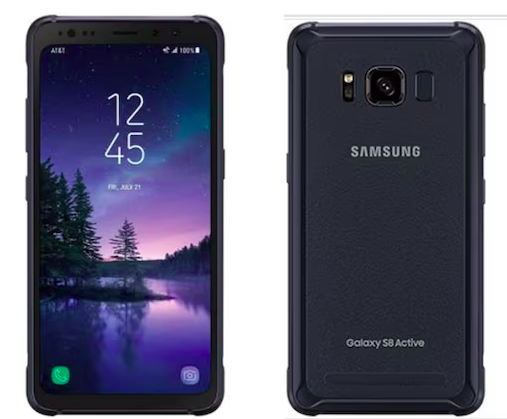







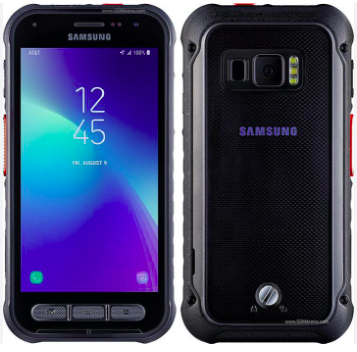
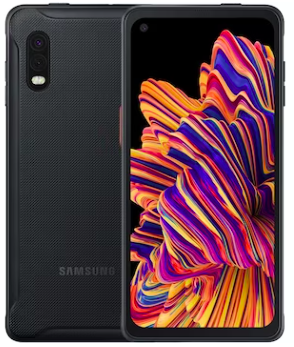

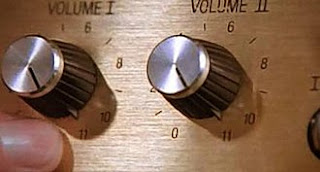
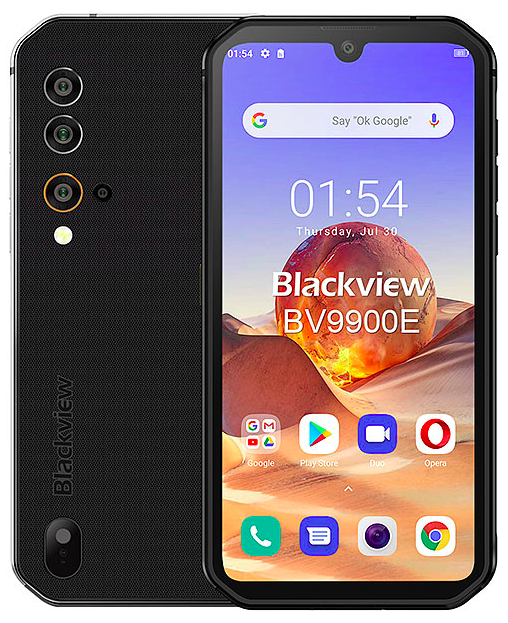

Comments
Post a Comment